报告题目:
Inefficiency of Classically Simulating Linear Optical Quantum Computing with Fock-state Inputs
报告人:J. P. Dowling
时间: 2016年5月19日14:00
地点: 物理楼226报告厅
报告内容:
Aaronson and Arkhipov recently used computational complexity theory to argue that classical computers very likely cannot efficiently simulate linear, multimode, quantum-optical interferometers with arbitrary Fock-state inputs [Aaronson and Arkhipov, Theory Comput. 9, 143 (2013)]. Here we present an elementary argument that utilizes only techniques from quantum optics. We explicitly construct the Hilbert space for such an interferometer and show that its dimension scales exponentially with all the physical resources. We also show in a simple example just how the Schr\odinger and Heisenberg pictures of quantum theory, while mathematically equivalent, are not in general computationally equivalent. Finally, we conclude our argument by comparing the symmetry requirements of multiparticle bosonic to fermionic interferometers and, using simple physical reasoning, connect the nonsimulatability of the bosonic device to the complexity of computing the permanent of a large matrix. We apply the results to quantum metrology and also show that other quantum optical states other than Fock states lead to similar conclusions.
报告人简介:
Professor and hearne chair of theoretical physics
Louisiana State University
Department of Physics & Astronomy
Horace C. Hearne, Jr. Institute of Theoretical Physics
RESEARCH INTERESTS
Quantum Science and Technologies
Principal areas of research concern quantum science and technologies, including: quantum electrodynamics, quantum optics, quantum information theory, photonic band-gap materials, and foundations of quantum mechanics. Current research work focuses on linear optical approaches to quantum information processing, metrology, and imaging; cavity quantum electrodynamics; and photonic band-gap structures for thermal emissivity control.
Fellow of the American Association for the Advancement of Science
Fellow of the American Physical Society
Fellow of the Optical Society of America
Fellow of the Institute of Physics
NASA Space Act Award for Invention of Quantum Lithography
Willis E. Lamb Medal for Achievement in Quantum Optics and Laser Science
National Research Council Technical Advisory Board on the Army Research Laboratory
